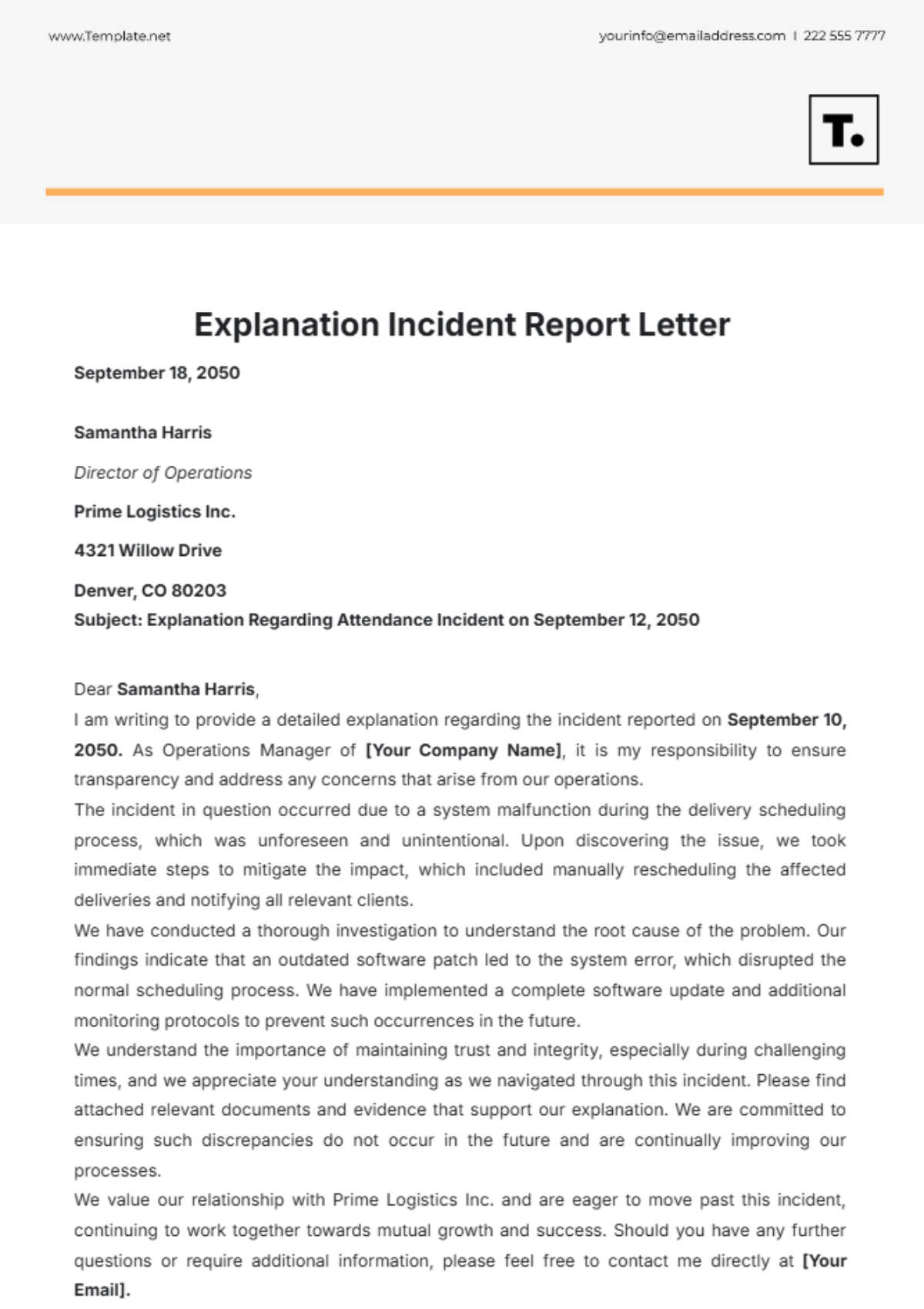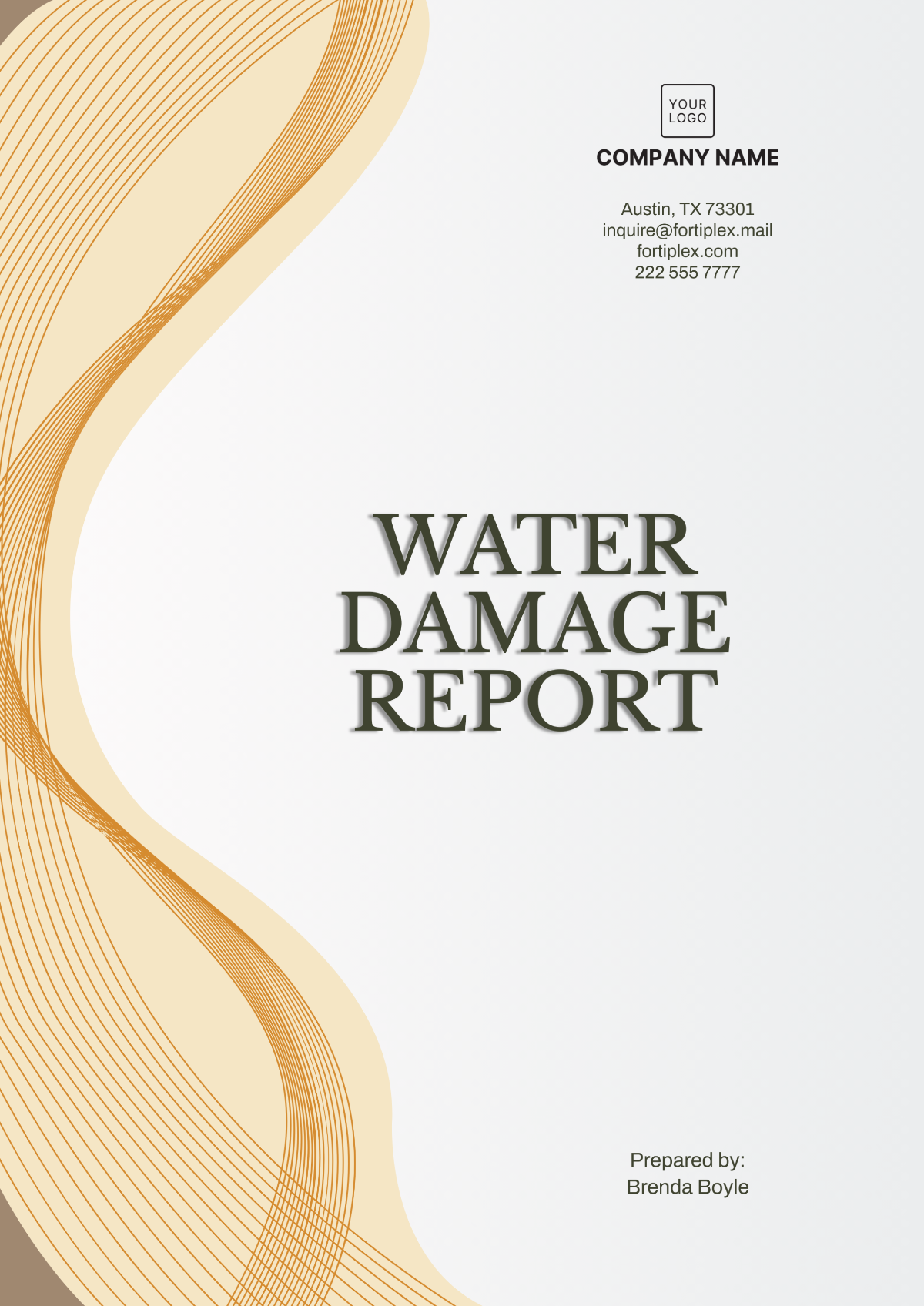Laboratory Incident Report
I. Incident Details
Incident Details | |
|---|---|
Report Number: | 2052-0518-001 |
Date of Incident: | June 18, 2052 |
Time of Incident: | 6:30 AM |
Location of Incident: | Chemical Analysis Laboratory, Building 3, Room 210 |
II. Reporting Individual
Name: [Your Name]
Position: Senior Research Scientist
Company: [Your Company Name]
III. Description of Incident
Substance Involved: Benzene (C6H6)
Description of Exposure:
At approximately 6:30 AM, a glass container holding 500 mL of benzene was accidentally knocked over by Dr. Jane Smith during routine handling. The spill resulted in benzene coming into contact with the skin of Dr. Smith and aerosolized particles inhaled by nearby personnel.
Immediate Actions Taken:
Activated emergency chemical spill response protocol.
Evacuated the laboratory and isolated the area.
Utilized absorbent materials to contain and neutralize the spill.
Administered first aid to Dr. Smith and others exposed.
Contacted emergency medical services.
Symptoms Observed:
Dr. Jane Smith: Skin irritation, dizziness, headache.
Dr. Alan Brown: Mild respiratory distress, and headache.
Dr. Emily White: Dizziness, nausea.
IV. Individuals Exposed
Person 1: Dr. Jane Smith, Senior Lab Technician, Skin irritation, dizziness, headache.
Person 2: Dr. Alan Brown, Postdoctoral Researcher, Mild respiratory distress, headache.
Person 3: Dr. Emily White, Graduate Research Assistant, Dizziness, nausea.
V. Witnesses
Witness 1: Dr. Robert Black
"I saw the glass container topple over and immediately initiated the spill response protocol. Dr. Smith appeared disoriented and was quickly evacuated from the lab."
Witness 2: Dr. Linda Green
"The moment the spill occurred, I noticed a strong odor of benzene and felt a slight headache. I assisted in the evacuation and helped administer first aid to Dr. Smith."
VI. Environmental Conditions
Laboratory Conditions: The laboratory was at standard operating temperature (22°C) with 50% relative humidity.
Ventilation: The laboratory is equipped with a HEPA filtration system, which is operational. However, the chemical fume hood near the spill was not in use at the time.
Safety Equipment Used: Personal protective equipment (PPE) including lab coats, gloves, and safety goggles were worn by all personnel. Emergency eye wash and shower were utilized immediately following the exposure.
VII. Follow-up Actions
Medical Attention Provided:
Dr. Jane Smith: Immediate decontamination and medical evaluation, followed by monitoring for 24 hours.
Dr. Alan Brown and Dr. Emily White: Both received medical evaluations and were monitored for any delayed symptoms.
Decontamination Procedures:
The affected area was thoroughly cleaned using appropriate chemical neutralizers.
Contaminated materials were disposed of according to hazardous waste protocols.
Subsequent Monitoring:
Air quality in the laboratory was monitored for 72 hours to ensure no residual benzene vapors.
All exposed individuals will undergo follow-up medical evaluations over the next week.
VIII. Preventive Measures
Actions to Prevent Recurrence:
Implemented additional training on proper handling and storage of hazardous chemicals.
Installed secondary containment systems for volatile substances.
Safety Training Conducted:
Conducted a refresher training session on emergency response procedures for chemical spills.
Emphasized the importance of using fume hoods when handling volatile substances.
Policy and Procedure Review:
Reviewed and updated the laboratory’s chemical safety protocols.
Increased frequency of safety drills and equipment checks.
IX. Reporting Information
Report Prepared By:

[Your Name]
[Date]
Reviewed By:

[Reviewer Name]
[Date]

















































